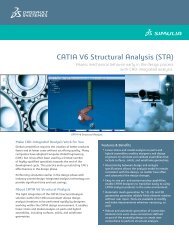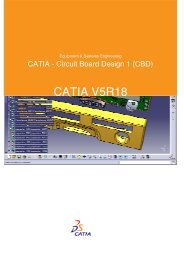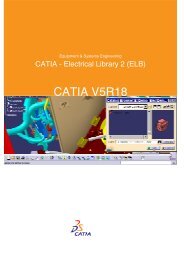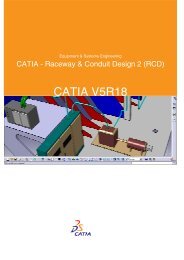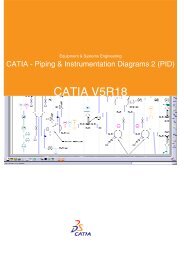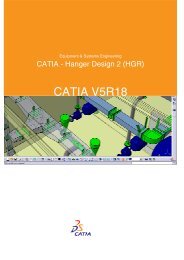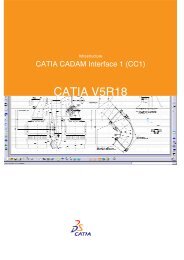Simulation of Electroencephalography (EEG) Using Abaqus
Simulation of Electroencephalography (EEG) Using Abaqus
Simulation of Electroencephalography (EEG) Using Abaqus
Create successful ePaper yourself
Turn your PDF publications into a flip-book with our unique Google optimized e-Paper software.
3<br />
Figure 4: Distribution <strong>of</strong> electrical potential gradient<br />
(μV/mm) on the surface <strong>of</strong> the head.<br />
Figure 6: Distribution <strong>of</strong> electrical potential (μV) on the<br />
surface <strong>of</strong> the head.<br />
Figure 5: Distribution <strong>of</strong> electrical potential gradient<br />
(μV/mm), cutaway view.<br />
tion <strong>of</strong> electrical potential gradients on the surface <strong>of</strong> the<br />
head and in the interior <strong>of</strong> the head. Figure 6 and Figure 7<br />
show the distribution <strong>of</strong> electrical potentials on the surface<br />
<strong>of</strong> the head and within the head. These results are compared<br />
to the intracranial and scalp <strong>EEG</strong> measurements<br />
obtained from patients implanted with depth electrodes<br />
using in vivo experiments in [4]. The forward solution can<br />
then be used to estimate inversely the locations <strong>of</strong> electrical<br />
sources from known <strong>EEG</strong> measurements.<br />
Conclusions<br />
Currently, <strong>EEG</strong> is used as a diagnostic tool to determine<br />
the location <strong>of</strong> the source <strong>of</strong> electrical disturbances inside<br />
the brain. However, this localization is not very accurate<br />
Figure 7: Distribution <strong>of</strong> electrical potential (μV), cutaway<br />
view<br />
at present. Numerical simulations <strong>of</strong> electrical conduction<br />
in the brain can help correlate the <strong>EEG</strong> signals to the<br />
electrical sources and increase the understanding <strong>of</strong> the<br />
influence <strong>of</strong> increased complexity on the forward solution.<br />
An improved forward solution can in turn determine the<br />
location <strong>of</strong> sources accurately from measured <strong>EEG</strong> values<br />
by solving the inverse problem. Accurate localization<br />
<strong>of</strong> the electrical disturbances will help neurosurgeons fine<br />
tune their surgical procedures, making such procedures<br />
more accurate and minimally invasive. The coupled thermal-electrical<br />
analysis procedure in <strong>Abaqus</strong> can be used<br />
to simulate intracranial electrical conduction and is well<br />
poised to play a big role in this crucial medical advancement.





